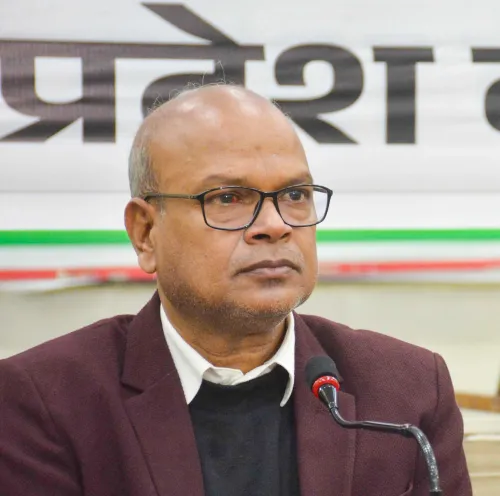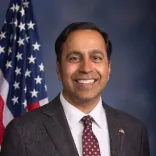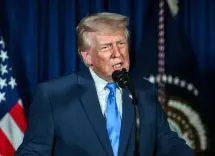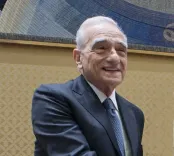What Does the Withdrawal of Syrian Forces Mean for Sweida?
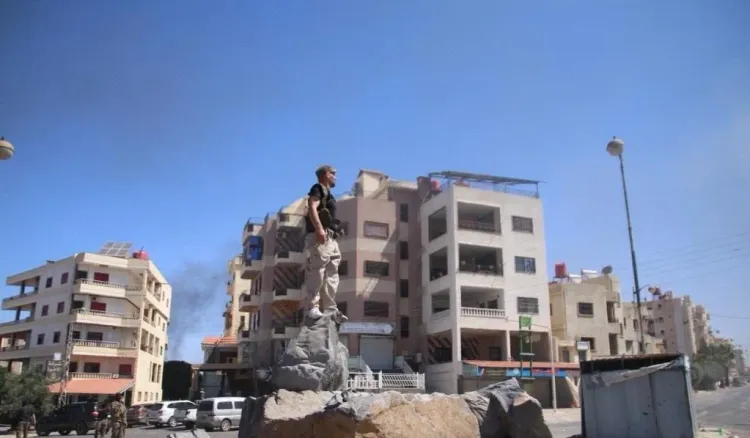
Synopsis
Key Takeaways
- Government forces have completed their withdrawal from Sweida.
- A temporary calm has been established, but violence has left significant casualties.
- Humanitarian conditions are dire, necessitating immediate assistance.
- A ceasefire is in effect, but its stability is questionable.
- The Druze community's future in Syria remains uncertain amidst ongoing tensions.
Damascus, July 17 (NationPress) The Syrian interim government forces have successfully withdrawn from the southern province of Sweida early Thursday morning, resulting in a brief period of tranquility following intense clashes involving government troops, Druze militants, and Bedouin tribes, as reported by the Syrian Observatory for Human Rights (SOHR).
According to Rami Abdulrahman, the director of the UK-based monitoring organization, “There are no remaining government fighters in Sweida.” It is still uncertain whether the internal security units, which were stationed in the area prior to the conflict, will return.
The province is currently on the brink of a humanitarian disaster as numerous corpses litter the war-torn districts, and the injured lack essential medical care.
The violence in Sweida escalated on Sunday when armed individuals from a Bedouin tribe attacked and robbed a young Druze man near al-Masmiyah, located along the Damascus-Sweida highway. This violent incident led to retaliatory abductions and sparked widespread hostilities between local Druze fighters, government forces, and Bedouin militias.
On Wednesday, Israel launched multiple airstrikes on Damascus and Sweida, claiming to protect the Druze minority from harm. These actions have faced swift condemnation from the global community.
The death toll from the violence has risen to over 370, with casualties including 207 government troops, 107 civilians and local fighters, 27 extrajudicial executions, 14 unidentified bodies found in recently reclaimed areas, and 18 individuals killed by Israeli airstrikes, as reported by SOHR, which also noted that these numbers could increase.
“An immediate relief effort and a united national response are needed to heal these wounds,” emphasized the SOHR.
In the wake of the Israeli airstrikes on Wednesday, a fragile ceasefire agreement was established between Syria’s interim government and Druze spiritual leaders. This truce entails a full halt to hostilities, the withdrawal of army units to their bases, and the complete reintegration of Sweida into state governance.
However, it remains uncertain whether this ceasefire will endure or if humanitarian and political recovery can take root in this war-ravaged region.
Sheikh Youssef Jarbouh, the leading spiritual figure of Syria’s Druze community, confirmed the ceasefire terms, urging all parties to adhere to the agreement. In contrast, the influential Druze cleric Sheikh Hikmat al-Hijri issued a separate statement rejecting any pact with the transitional government, vowing to persist in what he termed “legitimate resistance” until Sweida is entirely free of armed government presence.
In light of the ongoing divisions, Syrian interim leader Ahmed al-Sharaa reaffirmed the government’s commitment to safeguard all Syrians, particularly the Druze community, and vehemently denounced the Israeli airstrikes, as reported by Xinhua news agency.
In his address to Syria’s Druze populace, al-Sharaa reiterated their integral status within the nation, stating, “Protecting your rights and freedoms is our utmost priority.” He condemned any attempts to involve them in foreign agendas or foster internal discord.
Turning to Israel, al-Sharaa accused the “Israeli entity” of perpetually targeting Syrian stability and attempting to provoke internal strife since the collapse of the previous Syrian administration. He asserted that Israel aims to transform Syria into a perpetual battleground, undermine its national unity, and thwart its reconstruction efforts.
“Syria will not serve as a proving ground for foreign conspiracies, and we will not permit external ambitions to jeopardize our children and our future,” he concluded.





